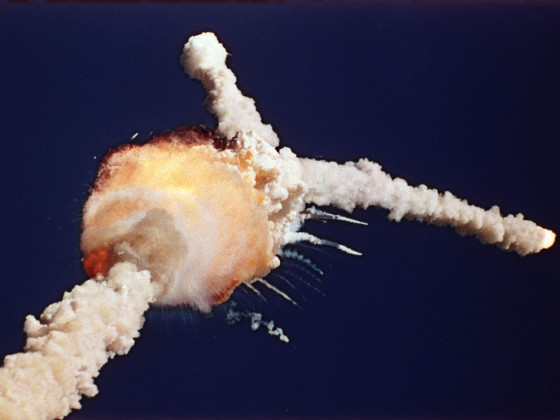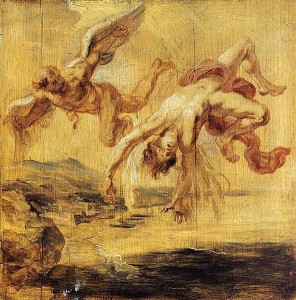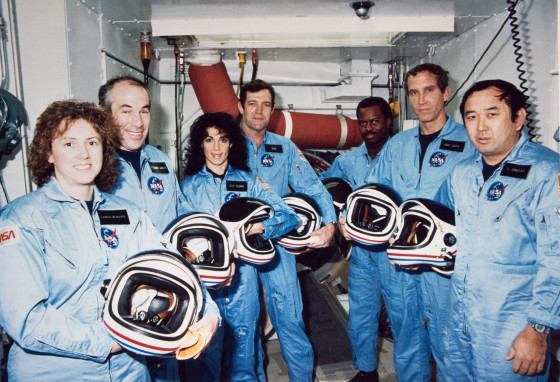Writings: That Icarus thing….and Christa

Back in the days when I taught language arts, the kids & I would read the story of Icarus.
You know the story (in a nutshell):
Often depicted in art, Icarus and his father attempt to escape from Crete by means of wings that his father constructed from feathers and wax. Icarus’s father warns him first of complacency and then of hubris, asking that he fly neither too low nor too high, so the sea’s dampness would not clog his wings or the sun’s heat melt them. Icarus ignored his father’s instructions not to fly too close to the sun, whereupon the wax in his wings melted and he fell into the sea.

Usually, there would be at least one student who would say, “Yep, sounds like my dad, too – don’t be too lazy, and don’t have too much fun.” After we all laughed, it was nice that we all agreed Icarus was just a frisky puppy who was looking for the edges of how much fun he could have. Instead of the discussion that we had in my college classroom that centred on how big-headed Icarus was, because he didn’t listen to his papa, and how that hubris led to his downfall, ours went another direction.
What if Icarus was a free spirit, looking to go as high as his wings wold take him? Looking for the thrill of going higher? Enjoying the freedom of both flight and powering himself, with his own strength & arms, to just glow, just because, just because.
You remember John Gillespie Magee’s High Flight – you gotta smile when you read it, and nearly every pilot I know loves the joy & feeling of exhilaration of Magee’s words :
Oh! I have slipped the surly bonds of earth,
And danced the skies on laughter-silvered wings;
Sunward I’ve climbed, and joined the tumbling mirth
Of sun-split clouds, –and done a hundred things
You have not dreamed of –Wheeled and soared and swung
High in the sunlit silence. Hov’ring there
I’ve chased the shouting wind along, and flung
My eager craft through footless halls of air…
Up, up the long, delirious, burning blue
I’ve topped the wind-swept heights with easy grace
Where never lark or even eagle flew —
And, while with silent lifting mind I’ve trod
The high untrespassed sanctity of space,
Put out my hand, and touched the face of God.
Isn’t that what Icarus wanted to do? And isn’t that what we all want to do?
So one morning, in January 1986, my grade nines in my school in Oregon City, Oregon and I had just wrapped up our Greek mythology session with Icarus, when my friend Mary from the class next door told me what had happened. My kids & I quietly went to her room (she had a TV), and watched the news of the Challenger explosion. It especially moved the other teachers & I, because one of the astronauts, the first civilian astronaut, was a teacher named Christa. Like us.
The kids left the room silently to go to the midday break, and Jennifer, from my class, whispered to me, “Just like Icarus. Trying to fly higher…”
The news people & the President & pretty much everyone spoke of the Challenger Seven as brave & wonderful.
Magee spoke of the joy of flying & taking the chance to say he had “done a hundred things/You have not dreamed of.”
And my students explored the idea that pushing the envelope, looking for something beyond the edge, was the morale of the story.
Because you might just find joy.
As always, they teach me way more than I could ever teach them.
Remembering our friends –
Brother Ian

In this photo from Jan. 9, 1986, the Challenger crew takes a break during countdown training at NASA’s Kennedy Space Center. Left to right are Teacher-in-Space payload specialist Sharon Christa McAuliffe; payload specialist Gregory Jarvis; and astronauts Judith A. Resnik, mission specialist; Francis R. (Dick) Scobee, mission commander; Ronald E. McNair, mission specialist; Mike J. Smith, pilot; and Ellison S. Onizuka, mission specialist.
Photo courtesy of NASA.
 Over the centuries, Brother Ian has been collecting stories & information & discourses for the purpose of elevating the human condition as needed, dissecting it when necessary, and building the case for hope.
Over the centuries, Brother Ian has been collecting stories & information & discourses for the purpose of elevating the human condition as needed, dissecting it when necessary, and building the case for hope.
Leave a Comment
(0 Comments)